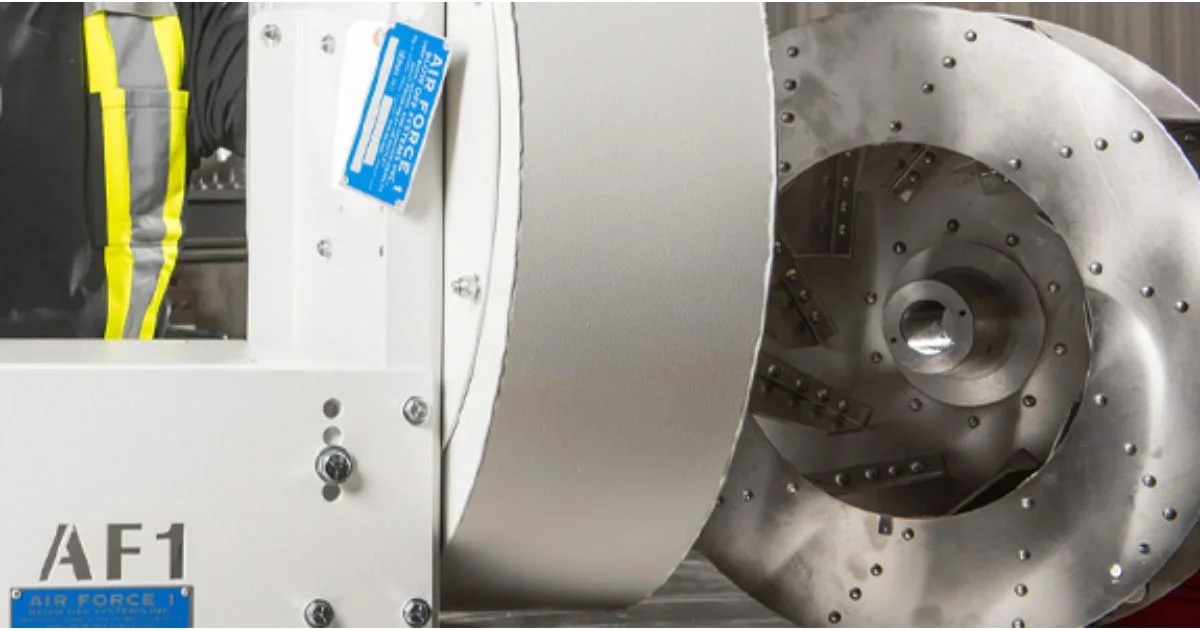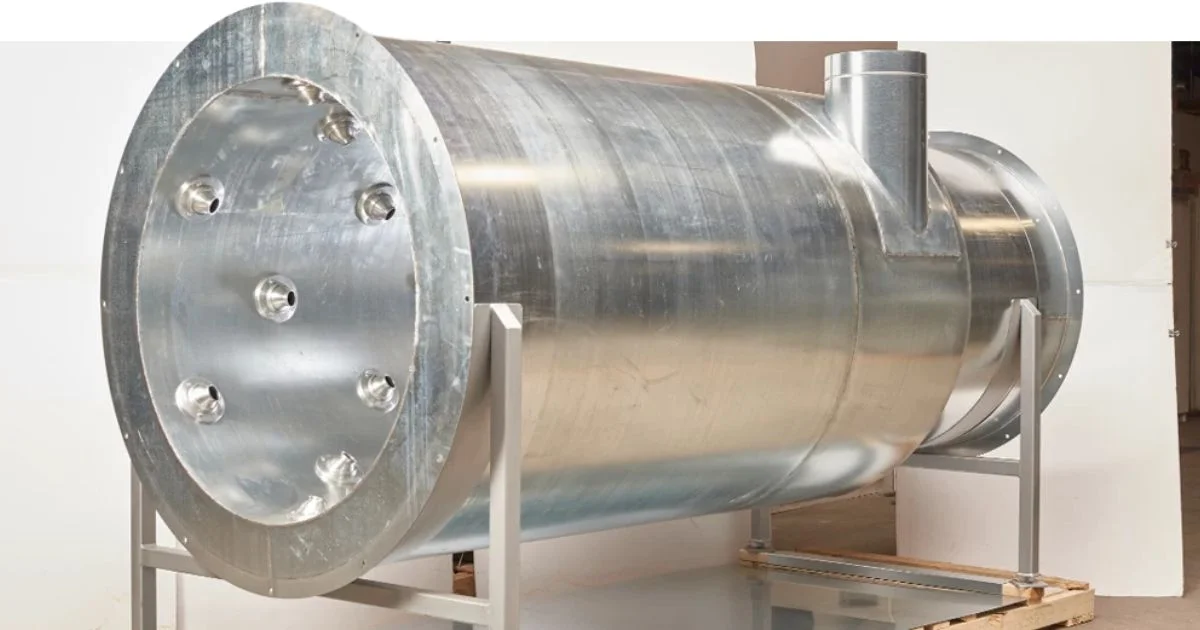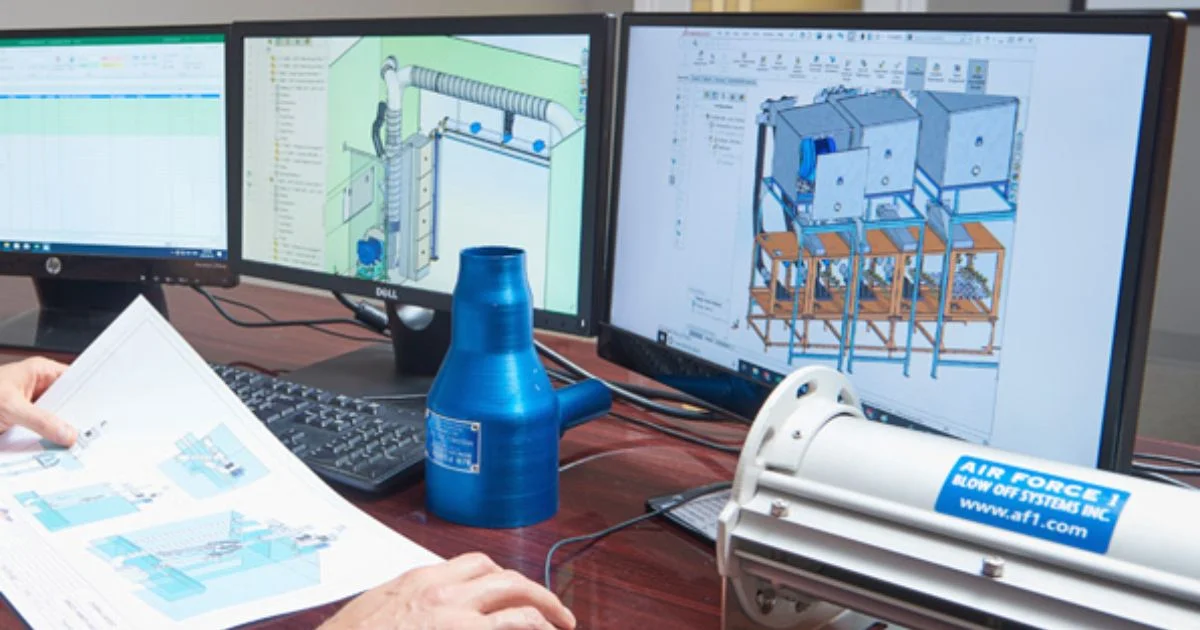
That aging blower system has been running your production line for years. Now you're facing pressure drops, efficiency losses, and maintenance headaches that keep getting worse. The question isn't whether you need changes. It's whether you can work with what you have or need to start fresh.
Blower repurposing might seem like a budget-friendly solution. This is especially true when capital approvals are tight. But what looks like savings on paper often creates expensive problems down the road.
We've done installations across automotive plants, food processing facilities, and electronics manufacturing. We've seen both successful upgrades and costly mistakes that could have been avoided. The reality is more complex than just "repair or replace."
Some older blowers can work well in new systems. Others become bottlenecks that hurt everything you're trying to improve. The difference comes down to understanding what you're working with. You also need to know what your new system needs.
Understanding Your Current Blower's Problems
Most facilities don't realize how much their existing blowers have lost performance over time. Worn seals, clearances, and internal components can cause a unit that once moved plenty of air to run much less efficiently. This happens because of worn impellers, bearing problems, or housing corrosion you can't see during regular inspections.
Belt-driven systems create the biggest headaches for blower repurposing. Those belts stretch and slip. This creates uneven power transfer that gets worse when you upgrade to a more demanding blow-off system.
We've walked into plants where operators try to fix this by over-tightening belts. But this just kills bearings faster and creates vibration problems throughout the system. Internal wear patterns tell the real story about whether repurposing will work.
When impeller blades get scored, efficiency drops while noise and vibration go up. Worn housing clearances let air recirculate instead of building pressure. These problems get much worse when you ask the blower to handle more airflow for new air knives or additional cleaning stations.
Even blowers that seem mechanically sound often can't deliver what modern blow off applications need. You need consistent pressure and flow. Legacy systems were often oversized for their original job. This sounds good until you realize they run inefficiently at the flow rates your new system actually needs.
When Repurposing Makes Financial Sense
The math on blower repurposing works best when your existing unit matches your new system's requirements. You don't want to make major changes. This happens more often in facilities upgrading from basic compressed air nozzles to engineered air delivery systems. The blower capacity requirements don't change much.
Size compatibility becomes the first checkpoint. Can your current blower deliver the volume and pressure your new air knives need? If yes, you're starting from solid ground. We've successfully integrated older centrifugal blowers into new systems. This works when the impeller design and housing geometry matched what the application needed.
Location flexibility matters too. Blowers that can be moved closer to the point of use often perform better in upgraded systems. This cuts pressure losses through long ductwork runs. It gives you more design flexibility for getting air where you need it.
The sweet spot for repurposing usually involves blowers that are mechanically sound but poorly applied. Take a unit that's been running continuously at low capacity. It might perform much better when properly matched to actual system demands through new controls and ductwork design. But the financial calculation must include hidden costs.
As we discussed in our article about why you need a complete system approach, retrofitting older blowers often needs custom mounting hardware, electrical changes, and control system integration. This can quickly cost more than a new unit designed for your application.
Technical Challenges with Mixed Systems
Mixing old blowers with new blow-off parts creates integration problems. These aren't obvious until you're deep into the project. Motor control systems designed years apart often don't work well together. This makes it hard to get the precise airflow control that modern applications need.
Electrical compatibility becomes a real problem. Older blower motors might not work well with variable frequency drives. This limit your ability to optimize energy use and match airflow to production needs. It forces you into inefficient fixed-speed operation or expensive motor replacement.
Ductwork changes usually cost more than expected. This happens when working around existing blower locations. Getting proper air distribution to new air knife positions often needs extensive piping changes. This eats up the cost advantage of keeping the old blower.
Performance monitoring and diagnostics suffer when you combine old and new equipment. Modern blow-off systems benefit from integrated controls.
These track airflow, energy use, and maintenance needs. Legacy blowers rarely provide the data interface needed for complete system management.
Noise and vibration characteristics change when you load older blowers differently. OSHA workplace safety guidelines show that equipment noise levels can go up significantly. This happens when aging systems operate outside their original design parameters. Units that ran quietly in their original application might become problematic. They get asked to deliver different pressure and flow combinations for your new system design.
The Direct Drive Advantage for System Upgrades

Direct drive blowers eliminate many of the problems that make older systems poor candidates for repurposing. The motor connects directly to the impeller. This removes belt-related variables that cause performance to drop over time.
This design approach delivers consistent power transfer that doesn't change as the system ages. We explored this in our direct drive versus belt drive comparison. There are no belts to stretch, slip, or replace. This means the blower performs the same way after years of operation as it did on day one.
Energy efficiency improves significantly compared to belt-driven alternatives. Direct connection eliminates power losses through mechanical drives, typically reducing energy consumption while delivering more reliable airflow characteristics.
Maintenance requirements drop dramatically with direct drive systems. You eliminate belts, pulleys, and related hardware. This reduces scheduled maintenance tasks and unexpected downtime. This reliability becomes especially valuable in continuous operation facilities. Blower failures cascade through the entire production line.
Space requirements often decrease with direct drive designs. This gives you more flexibility for system layout and installation. It can be crucial when retrofitting existing production areas where floor space is limited.
Making the Right Decision for Your Facility
The decision between blower repurposing and replacement should start with an honest assessment. Look at your current system's condition and your new application requirements. Document actual airflow, pressure, and energy consumption. Don't rely on nameplate specifications or assumptions about performance.
Many warning signs we discussed in our article about recognizing when your manufacturing process needs a blower system upgrade apply equally to repurposing decisions. Similarly, the signs of inefficient drying processes often indicate that your existing blower can't handle upgraded system demands.
Recurring equipment breakdowns, inconsistent performance, and rising energy costs all point toward replacement rather than retrofitting.
Consider your facility's maintenance capabilities and approach. Do you have skilled technicians who can handle mixed-vintage equipment? Do you prefer to maximize asset life? If yes, repurposing might align with your operational approach. Facilities that prioritize simplicity and predictable performance often find better long-term value in complete system replacement.
Timeline pressures influence the decision, too. Retrofitting existing blowers usually takes longer than installing new equipment designed specifically for your application. Production demands might not allow for extended downtime. If that's the case, the speed and predictability of new equipment installation often justify the additional cost.
Integration with facility management systems is becoming increasingly important. Plants are moving toward connected operations. New blower systems with modern control interfaces integrate more easily with energy management and predictive maintenance programs.
Future-Proofing Your Investment
Technology keeps evolving in blow-off system design. You see improvements in energy efficiency, control integration, and predictive maintenance capabilities. Systems designed today need to accommodate these advances rather than limiting your options.
Variable frequency drives and smart controls are becoming standard in modern installations. They provide energy optimization and performance monitoring that older blowers can't always support. Planning for these capabilities now saves retrofit costs later.
Environmental regulations keep pushing toward lower energy consumption and reduced noise levels. New direct drive systems typically meet these requirements more easily than retrofitted older equipment. This protects you from future compliance issues.
Production line speeds keep increasing across most industries. This demands more consistent and reliable air delivery. Systems built with modern components handle these demands more predictably than patched-together solutions using repurposed equipment.
The Complete System Approach

Working with older blowers often means accepting compromises in system design. This limits overall performance. New installations can optimize every component. Blowers, ductwork, and air delivery devices work together efficiently.
This integrated approach typically delivers better results than trying to maximize individual component performance. When blowers, air knives, and controls are designed together, you get predictable operation. You also get easier troubleshooting when issues arise.
System expandability becomes important, too. Facilities that grow or change their production processes need blow-off systems that can adapt. Purpose-built systems with modern blowers handle modifications more easily than installations constrained by repurposed legacy equipment.
Training and knowledge transfer work better with standardized equipment. When your team learns one manufacturer's approach rather than managing multiple technologies, they develop deeper expertise. This improves long-term system reliability.
Making Your Choice
Blower repurposing can work when existing equipment genuinely matches new system requirements, and your facility can handle mixed-vintage maintenance challenges. However, most facilities find better long-term value in complete system replacement with modern direct drive technology.
The initial cost difference often disappears within the first few years through energy savings, reduced maintenance, and improved reliability. More importantly, new systems provide the consistent performance that modern production demands while supporting future operational improvements.
Ready to evaluate your current blower system's repurposing potential? Start with an honest assessment of actual performance versus nameplate specifications, then consider whether partial upgrades align with your facility's operational approach and technical capabilities.
What's driving your interest in system changes – energy costs, maintenance headaches, or production performance requirements?

